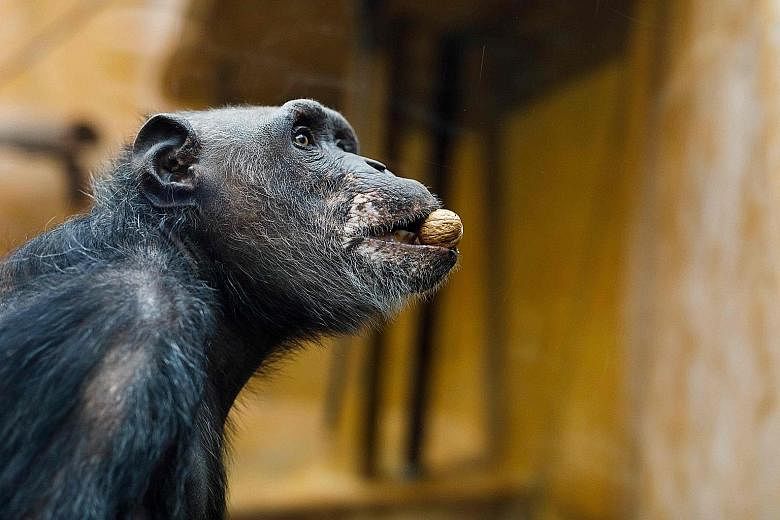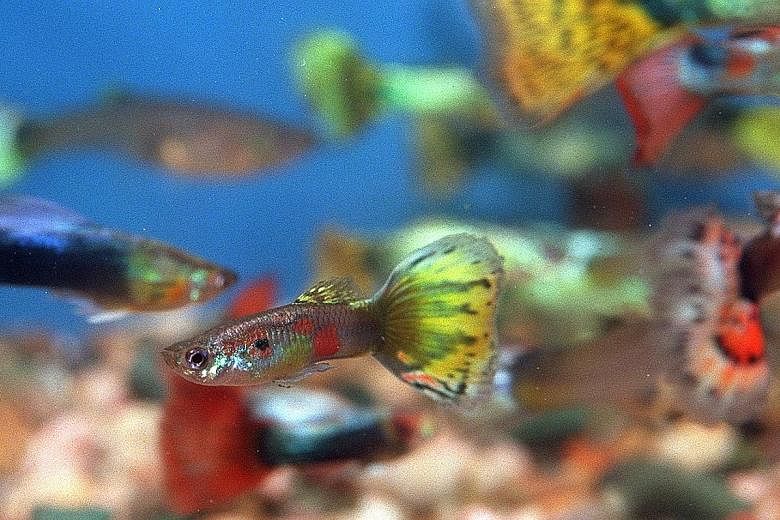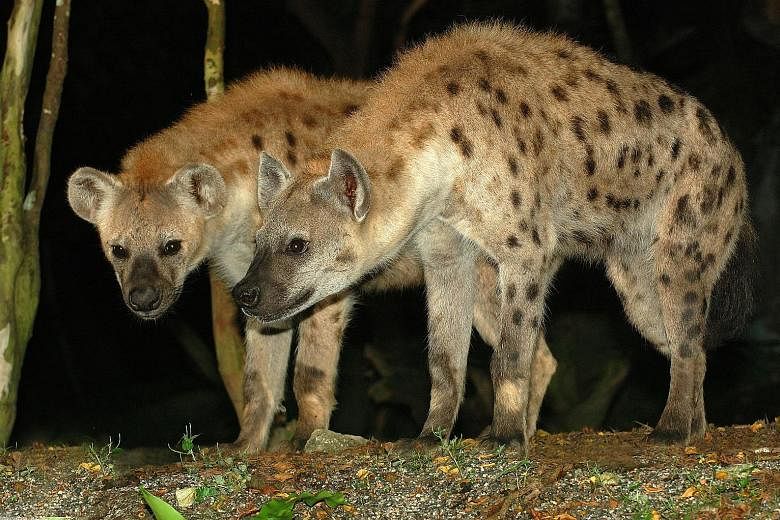Every night during breeding season, the male tungara frog of Central America will stake out a performance patch in the local pond and spend unbroken hours broadcasting his splendour to the world.
The mud-brown frog is barely the size of a shelled pecan, but his call is large and dynamic, a long downward sweep that sounds remarkably like a phaser weapon on Star Trek, followed by a brief, twangy, harmonically dense chuck.
Unless, that is, a competing male starts calling nearby, in which case the first frog is likely to add two chucks to the tail of his sweep. And should his rival respond likewise, Male A will tack on three chucks.
Back and forth they go, call and raise, until the frogs appear to hit their respiratory limit at six to seven rapid-fire chucks.
The acoustic one-upfrogship is energetically draining and risks attracting predators like bats. Yet the male frogs have no choice but to keep count of the competition, for the simple reason that female tungaras are doing the same: listening, counting and ultimately mating with the male of maximum chucks.
Behind the frog's surprisingly sophisticated number sense, scientists have found, are specialised cells located in the amphibian midbrain that tally up sound signals and the intervals between them.
"The neurons are counting the number of appropriately timed pulses, and they're highly selective," said Dr Gary Rose, a biologist at the University of Utah. If the timing between pulses is off by just a fraction of a second, the neurons don't fire and the counting process breaks down.
"It's game over," Dr Rose said. "Just as in human communication, an inappropriate comment can end the whole conversation."
The story of the frog's neuro-abacus is just one example of nature's vast, ancient and versatile number sense, a talent explored in detail in a themed issue of the journal Philosophical Transactions of the Royal Society B, edited by Dr Brian Butterworth, a cognitive neuroscientist at University College London, Dr C. Randy Gallistel of Rutgers University and Dr Giorgio Vallortigara of the University of Trento in Italy.
Scientists have found that animals across the evolutionary spectrum have a keen sense of quantity, able to distinguish not just bigger from smaller or more from less, but two from four, four from 10, 40 from 60.
Orb-weaving spiders, for example, keep a tally of how many silk-wrapped prey items are stashed in the "larder" segment of their web.
When scientists experimentally remove the cache, the spiders will spend time searching for the stolen goods in proportion to how many separate items had been taken, rather than how big the total prey mass might have been.
Small fish benefit from living in schools, and the more numerous the group, the statistically better a fish's odds of escaping predation. As a result, many shoaling fish are excellent appraisers of relative head counts.
Guppies, for example, have a so-called contrast ratio of 0.8, which means they can distinguish and if given the chance will swim towards the slightly fishier crowd.
Three-spined sticklebacks are more discriminating still: with a contrast ratio of .86, they're able to tell six fellow fish from seven, or 18 from 21 - a comparative power that many birds, mammals and even humans might find hard to beat.
Despite the prevalence of maths phobia, people too are born with a strong innate number sense, and numerosity is deeply embedded in many aspects of our minds and culture. Researchers have found that number words for small quantities - fewer than five - are strikingly similar across almost all language groups studied, and the words are among the most stable, unchanging utterances in any lexicon.
They are more conserved through time and across cultures than words for other presumably bedrock concepts like mother, father and most body parts, with a few puzzling exceptions like the words for tongue and eye.
"The sounds you and I use to say 'two' or 'three' are the sounds that have been used for tens of thousands of years," said biologist Mark Pagel, who studies the evolution of language at the University of Reading.
"It's not out of the question that you could have been wandering around 15,000 years ago and encountered a few of the last remaining Neanderthals, pointed to yourself and said, 'one', and pointed to them and said, 'three', and those words, in an odd, coarse way, would have been understood." That continuity, Dr Pagel added, "should astonish us".
The earliest formal number systems, complete with those all-important place values, date back only about 3,500 years, to ancient Mesopotamia, but quantitative record keeping is much older. Dr Francesco D'Errico, an archaeologist at the University of Bordeaux, described his team's analysis of a 70,000-year-old hyena femur from the Les Pradelles site in France.
The leg bone fragment is incised with nine parallel, nearly identical notches, which look far too regular to be the incidental result of butchery with stone tools or an early attempt at artful decoration.
"This fits with the idea that the incisions are a form of numerical notation," Dr D'Errico said.
"We see the beginnings of externalising our numeric sense, of taking it outside the body."
Attitudes about animal numerosity have changed greatly since the mid-20th century when many researchers believed only humans had enough grey matter to think quantitatively. They cited as an object lesson the 1907 case of Clever Hans, the horse that supposedly could solve arithmetic problems and would tap out his answers by hoof - as it turned out, he was responding to unconscious cues from the people around him.
Since then, researchers have approached the field with caution and rigour, seeking to identify the specific evolutionary pressures that might spur the need for numeric judgments in any given species.
Social carnivores like spotted hyenas, for example, live in fission-fusion societies, collectively defending their territories against rivals but in ever-shifting groups of widely roaming members.
"You can never predict who you'll find in which group," said Dr Sarah Benson-Amram, an assistant professor of zoology and physiology at the University of Wyoming.
"You might be alone or in a group of 10." Because hyena jaws can pulverise zebra bones, encounters between competitors can prove deadly; every spotted hyena must have a good sense from moment to moment of how many there are of us versus how many of them.
Dr Benson-Amram and her colleagues tested hyena numerosity skills in the field, playing back the recorded whoops of spotted hyenas living in South Africa and Namibia to hyenas in Kenya.
The Kenyan carnivores reacted to the whoops of strangers as predicted, approaching the hidden source of the sound when they had a home team advantage, retreating when they heard a few too many distinctive voices in a row. Or sometimes, when the local hyenas were outnumbered, they'd call for backup.
"I always loved it when the hyenas would whoop and others would come running in," Dr Benson-Amram said. "It was very dramatic, very aggressive, and I appreciated this ability to recruit other group members to the cause."
Chimpanzees are social scorekeepers, episodic warriors and number ninjas, too. They can be taught to associate groups of objects with corresponding Arabic numerals up to the number 9 and sometimes beyond - three squares on a computer screen with the number 3, five squares with 5, and so on. They can put those numerals in order.
The numeric working memory of young chimpanzees is astonishing: Flash a random scattering of numerals on a screen for just 210 milliseconds - half an eye blink - and then cover the numbers with white squares, and a numerically schooled young chimpanzee will touch the squares sequentially to indicate the ascending order of the numbers hidden beneath.
Don't bother trying to do this yourself, Dr Tetsuro Matsuzawa, a primatologist at Kyoto University, said at the scientific meeting in London on which the themed journal was based.
"You can't." By the look of it, cerebral property in humans once dedicated to numeric memory has, in the six million years since we diverged from chimpanzees, been co-opted for grander purposes, like the ability to judge whether a sentence like this is true: "There is no non-vanishing continuous tangent vector field on even dimensional spheres." Dr Stanislas Dehaene, a psychologist at the University of Paris, and his colleagues presented evidence from brain scans of professional mathematicians that the neural circuitry for advanced mathematical thinking is an elaboration on the archaic number sense we share with other animals.
It is distinct from our everyday language pathways, even when that maths-related challenge involves words rather than numbers - like the true statement above.
Yet our inborn numerosity hardly guarantees mathematical proficiency, and can sometimes work against us. Psychologists Rochel Gelman of Rutgers University and Jennifer Jacobs Danan of the University of California, Los Angeles, have studied how often reasonably well-educated people miscalculate percentages.
We hear that the price of something rose by 50 per cent and then fell by 50 per cent, and we reflexively, mistakenly conclude: "Oh good, we're back to where we started." Our natural number sense adds and subtracts whole numbers, whole chucks, guppies and hyenas. But it really abhors a fraction, and so has led us astray.
NYTIMES



